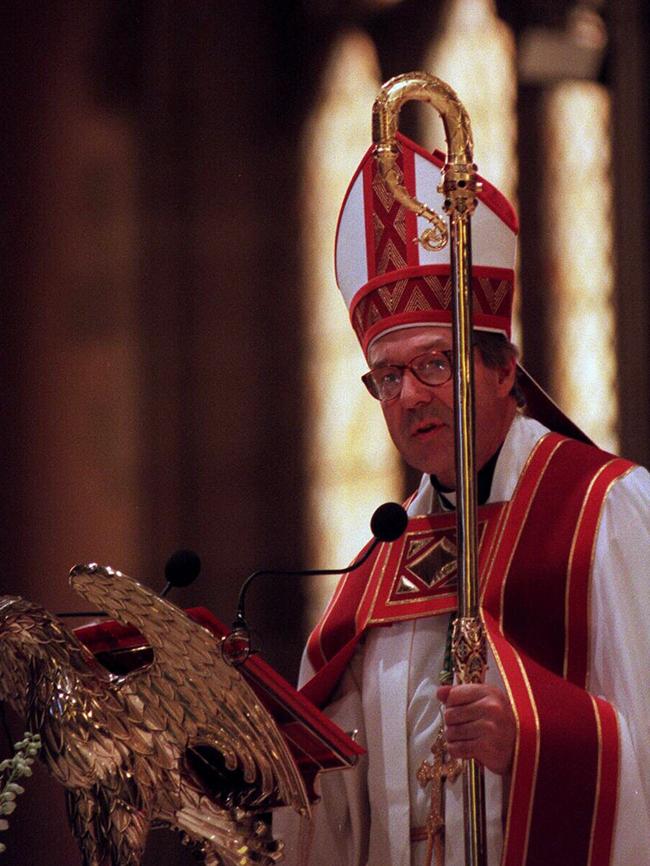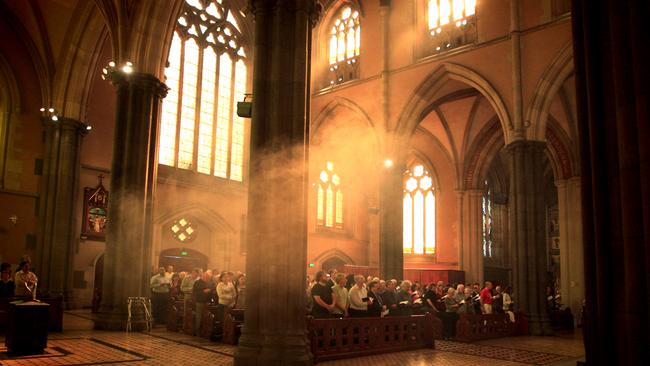Andrew Bolt: Why the case against George Pell is improbable
The High Court has decided that there is something in George Pell’s case that deserves its attention. These are the key issues the court needs to consider in the cardinal’s final chance for justice, writes Andrew Bolt.
Andrew Bolt
Don't miss out on the headlines from Andrew Bolt. Followed categories will be added to My News.
Finally, the chance of the justice at last for Cardinal George Pell. The High Court this morning agreed to hear his appeal.
Now for the next step: to actually decide whether Pell was, as I believe, wrongly convicted of the sexual assault of two choir boys just after Mass in a busy cathedral.
That’s yet for the Court to decide, but the fact that it has decided there is something in the case that deserves its attention is significant.
This should interest the two Victorian Court of Appeal judges — president Chris Maxwell and Chief Justice Anne Ferguson — who in August overruled fellow judge Mark Weinberg and said the jury verdict against Pell was “reasonable”.
Their credibility is now on the line.
Weinberg, the only judge of the three with extensive experience in criminal law, was damning of the case against Pell, finding it improbable that he could have done what was alleged.

He also seemed to accuse his fellow judges of putting too much faith in the demeanour of Pell’s sole accuser, warning that the High Court in the past “has observed that it can be dangerous to place too much reliance upon the appearance of a witness, rather than focusing, so far as possible, upon other, more objectively reliable matters”.
And that is now exactly one of the key issues the High Court will look at again.
Did the majority judges trust too much to the accuser’s demeanour? Were they too keen to believe the alleged victim and did they dismiss too quickly the huge improbabilities in his claims?
This was also the case made to the High Court by Pell’s lawyers, Bret Walker SC and Ruth Shann.

They argued that Pell had in effect been asked by the Court of Appeal to prove the attack was impossible – itself an almost impossible burden for an accused person so long after the event.
Consider this. Pell, wearing two heavy robes to his feet, is accused of having sexually abused two 13-year-old choir boys at once in a normally very busy sacristy, the door open, right after Mass, even though other witnesses swore it was their job never to leave Pell’s side, and that he’d have instead been at the Cathedral door, anyway, saying goodbye to parishioners.
What’s more, the claim rested on the unsupported word of a single accuser, and after the other boy, now dead, had told his mother there had been no abuse.
But I would go further than say the case against Pell is improbable or, as Weinberg put it, that there is a “significant possibility” that Pell did not do these crimes.
I’d say the crimes could not possible have occurred as alleged, and as the two judges said must have occurred had they occurred at all.
As I’ve explained at length before, the two judges who dismissed Pell’s appeal said the assault on the two boys, said to have taken around five minutes, must have occurred in the “five or six minutes” of “private prayer time” immediately after Mass finished.
After that, the servers would be going in and out, bringing back things used in the Mass and stored in the sacristy.
The two judges had also said that “quiet time” started when the choir (including Pell’s accuser) formed a procession, led by five servers dressed in black, and “processed” to the Cathedral’s front door.
To be precise, the evidence was the quiet time started as the procession walked up the central aisle.

The judges said the procession then walked around the cathedral to a gate near the back, opening to a corridor inside.
The servers would then turn left, to walk just 8m to the sacristy, where they’d store their cross and start the clean up. The choir would turn right and go to their room.
It was at that moment, the accuser had told the jury, that he and the second alleged victim decided to sneak off.
They doubled back to enter a side door of the cathedral, and turned back again to go to the sacristy. There Pell found them and raped them over some five minutes.
But can you see the obviously impossible?
Where were the servers? When the boys supposedly escaped the procession, the servers at the front were just 8m from the sacristy themselves.
They must have reached it before the two boys got there from the other side. There was zero chance then of Pell then finding five minutes to rape the boys without being seen.
How was this not stark-staring obvious?
READ MORE
PELL VICTIM DAD’S EMOTIONAL PLEA
But I mentioned my walk. Remember, the judges said the boys must have been raped in the five or six minutes of private prayer time after the mass, or they could not have been raped at all.
So I walked the route Pell’s accuser said he took after that mass and I timed it – four minutes and 30 seconds just to reach the sacristy. Add a minute for “poking” around, opening a cupboard, finding altar wine and taking a “few swigs”.
Do the maths: that adds up to five minutes and 30 seconds — all that “quiet time” of “five or six minutes” in which the judges thought the five-minute rape must have happened, if Pell’s accuser was right.
That’s the maths. And it adds up to this: this rape could not possibly have happened.
At the very least, the improbability is so very high that no-one should convict a man on that evidence just because his accuser seemed to be so nice or honest.
And this is what the High Court may now consider.
